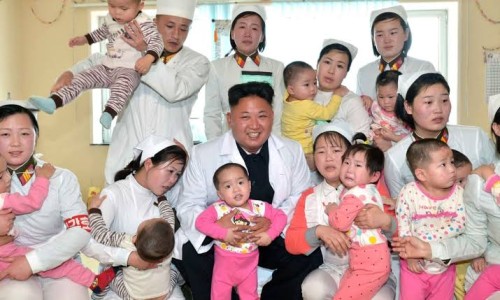In an unusual display of emotion, President Kim Jong Un was observed rubbing his eyes with a handkerchief while addressing the National Mothers’ Meeting in Pyongyang, urging women to contribute to the nation’s strength by having more children.
“Stopping the decline in birth rates and providing good childcare and education are all our family affairs that we should solve together with our mothers,” Mr Kim told the meeting.
Birth control programmes implemented by North Korea during the 1970s and 1980s to impede the country’s post-war population development stand in stark contrast to the emotional appeal made by Kim.
As one of the world’s poorest countries, North Korea has been very secretive about its statistics, making it impossible to gather reliable birth rate data. According to official government assessments, the birth rate of South Korea’s northern neighbour has been declining over the last decade.
From 1.88 in 2014 to 1.79 in 2022, the average number of infants predicted to be born to a woman in North Korea fell. South Korea’s birth rate fell to 0.78 in 2017 from 1.20 in 2014, a steeper decrease, but still slower.
A research issued in August by the Hyundai Research Institute in Seoul said that the country’s fertility rate dropped significantly in the mid-1990s due to a famine that killed hundreds of thousands of people.
“Many families in North Korea also don’t intend to have more than one child these days as they know they need lots of money to raise their kids, send them to school and help them get jobs,” Ahn Kyung-su, head of DPRKHealth.org, a website focusing on health issues in North Korea, commented.
At present, the North Korean population is estimated by South Korea’s statistics office to be 25.7 million. According to a survey by the Hyundai Institute, the population of North Korea is projected to decline starting in 2034 and reach 23.7 million by the year 2070.
Reports in North Korean official media indicate that the nation has instituted programmes to assist families with three or more children.
Among them are educational benefits for children, preferred housing arrangements, free food, medication, and home products, as well as government subsidies.

Leave a Reply